Explore the Wonders of Pudding Creek! Discover the natural beauty and fascinating history of Pudding Creek with the Skunk Train!
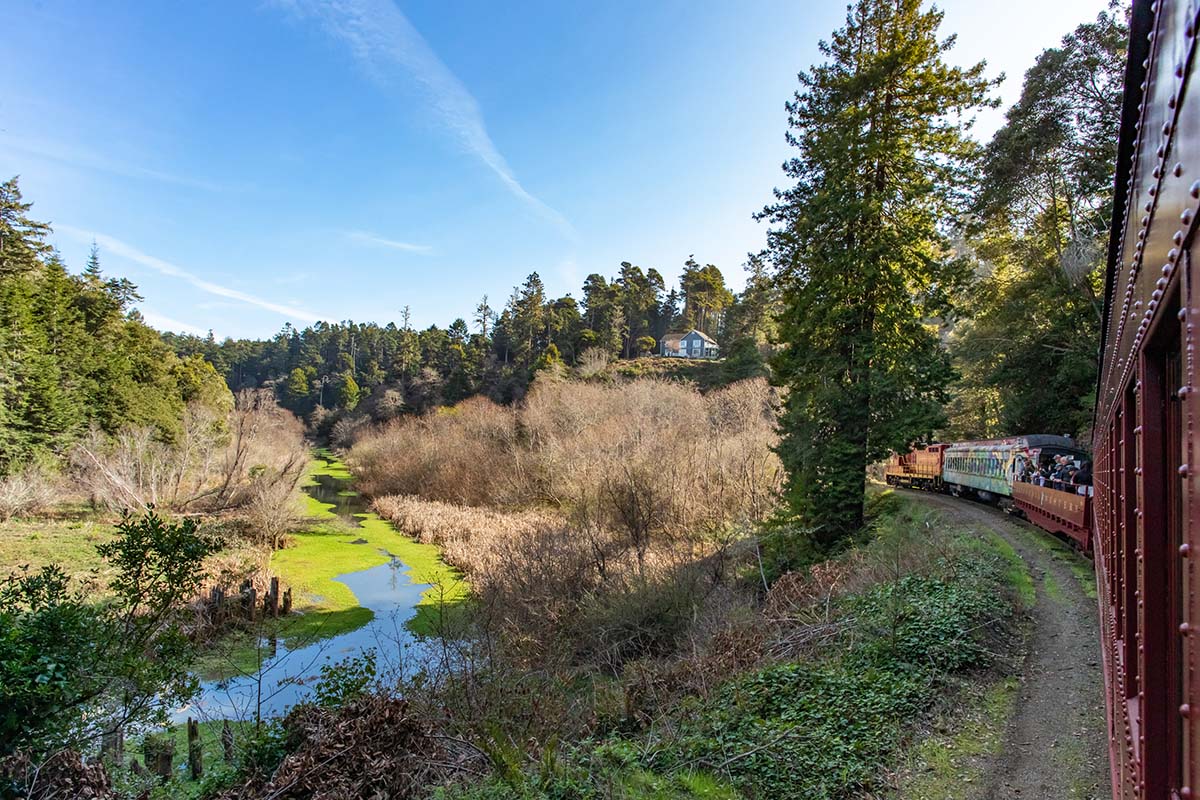
Pudding Creek
Pudding Creek
That’s Pudding Creek out to your left, and for the next few miles we'll be traveling along some of the first tracks laid down by the California Western Railroad. This area was once used as log storage by the Union Lumber Company, holding up to 20 million board feet of timber at one point. Today, it serves as a wildlife area, home to a variety of fauna such as ducks, swans, great blue herons, egrets, turtles, deer, and many other animals.
Pudding Creek
Pilings
Pilings
Notice the pilings protruding from the water. These supported bridges and loading docks used by the train in the past. The tracks would extend up every canyon and creek in the area, connecting small towns and logging camps deep within the woods.
Pilings
Our History
Our History
The Skunk Train began operation in 1885, with the first railroad equipment arriving in Fort Bragg by ship. Its main purpose was to transport logs from the woods to the mill in Fort Bragg, where they were processed into lumber and shipped to San Francisco by steamship.
Our History
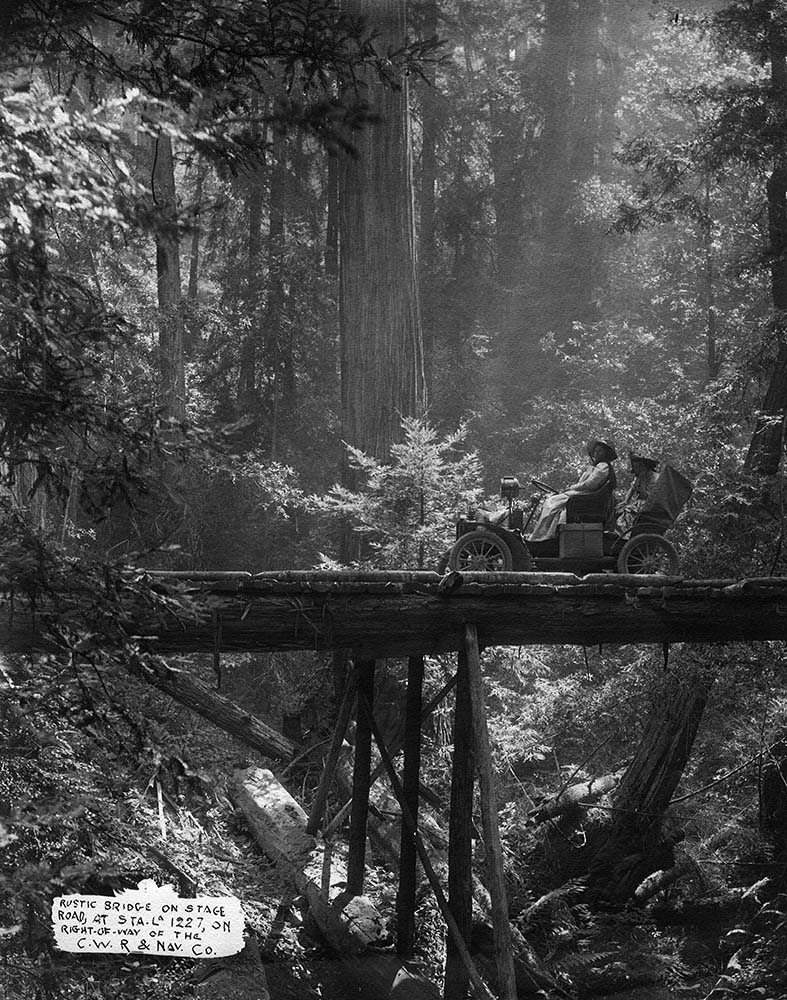
Passenger Service
Passenger Service
Passenger service for the Skunk Train started in 1904, but it didn't reach Willits until 1911. Before that, passengers traveling to Willits would ride out from Fort Bragg to various small towns along the line, stay the night in a hotel, and continue their journey the next day by stagecoach.
Passenger Service
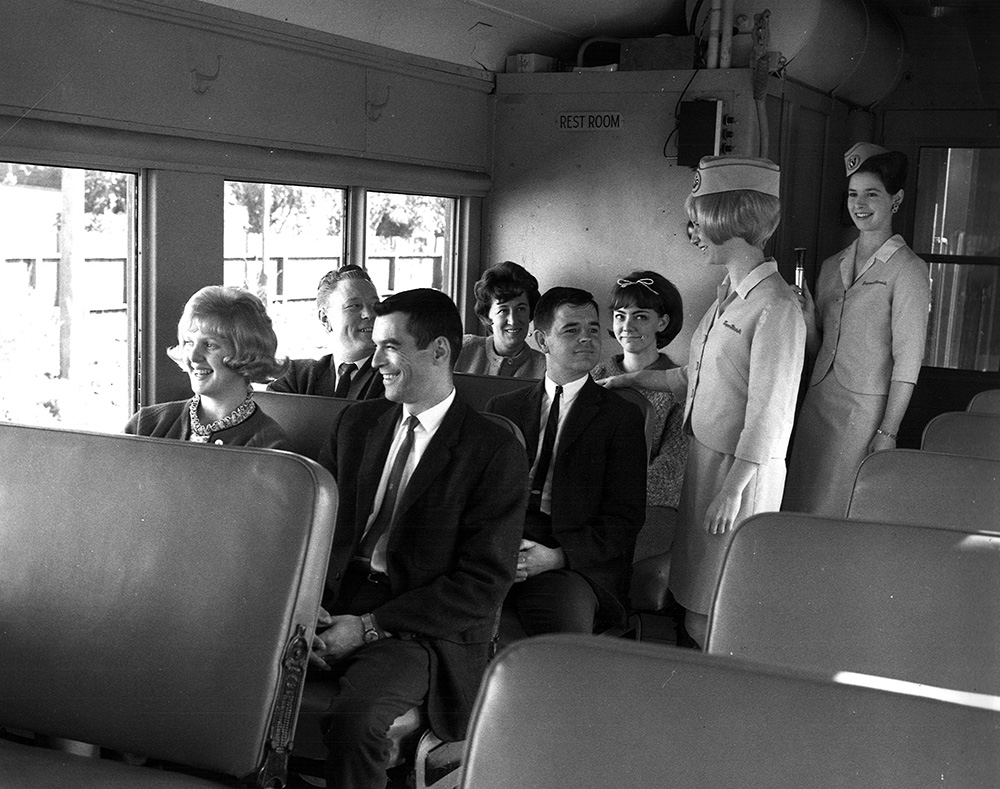
After 1911
After 1911
In 1911, the train finally reached Willits, reducing the travel time significantly. From there, passengers and freight could continue their journey north and south with the Northwestern Pacific Railroad, extending the reach of the Skunk Train by rail.
After 1911
Mail Service
Mail Service
The Skunk Train held the distinction of being the last railroad to deliver mail six days a week under a federal contract until September 15, 2003. This historical feat landed the Skunk Train a spot in the Smithsonian.
Mail Service
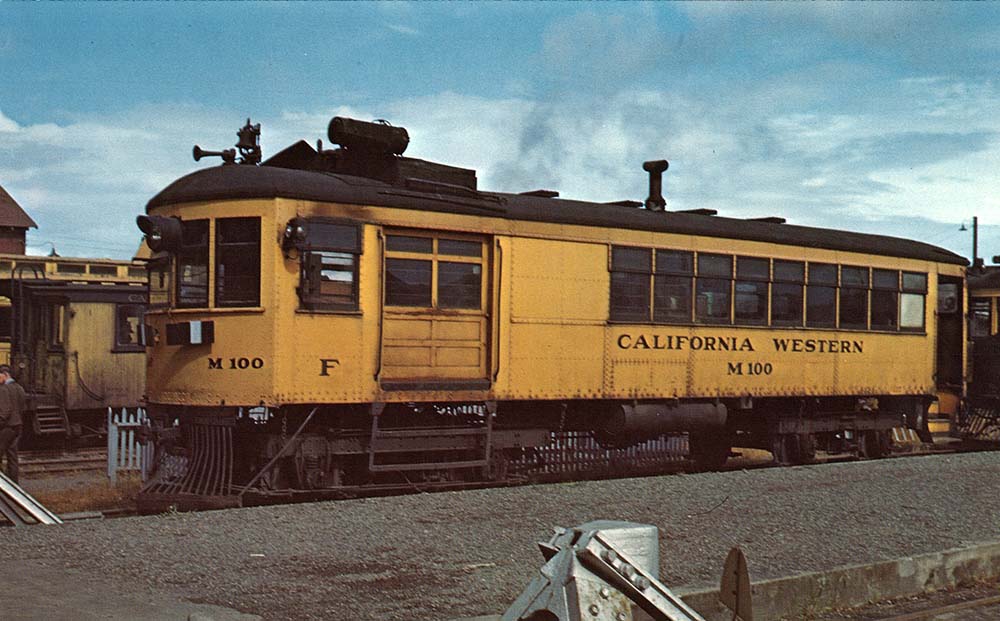
The Friendly Train Called "Skunk"
The Friendly Train Called "Skunk"
In 1925, the Skunk Train transitioned from steam locomotives to self-propelled railcars known as "Motorcars." Locals started calling them "Skunks" due to the pungent odor produced by the gasoline engine and oil-burning potbellied stove on board.
The Friendly Train Called "Skunk"
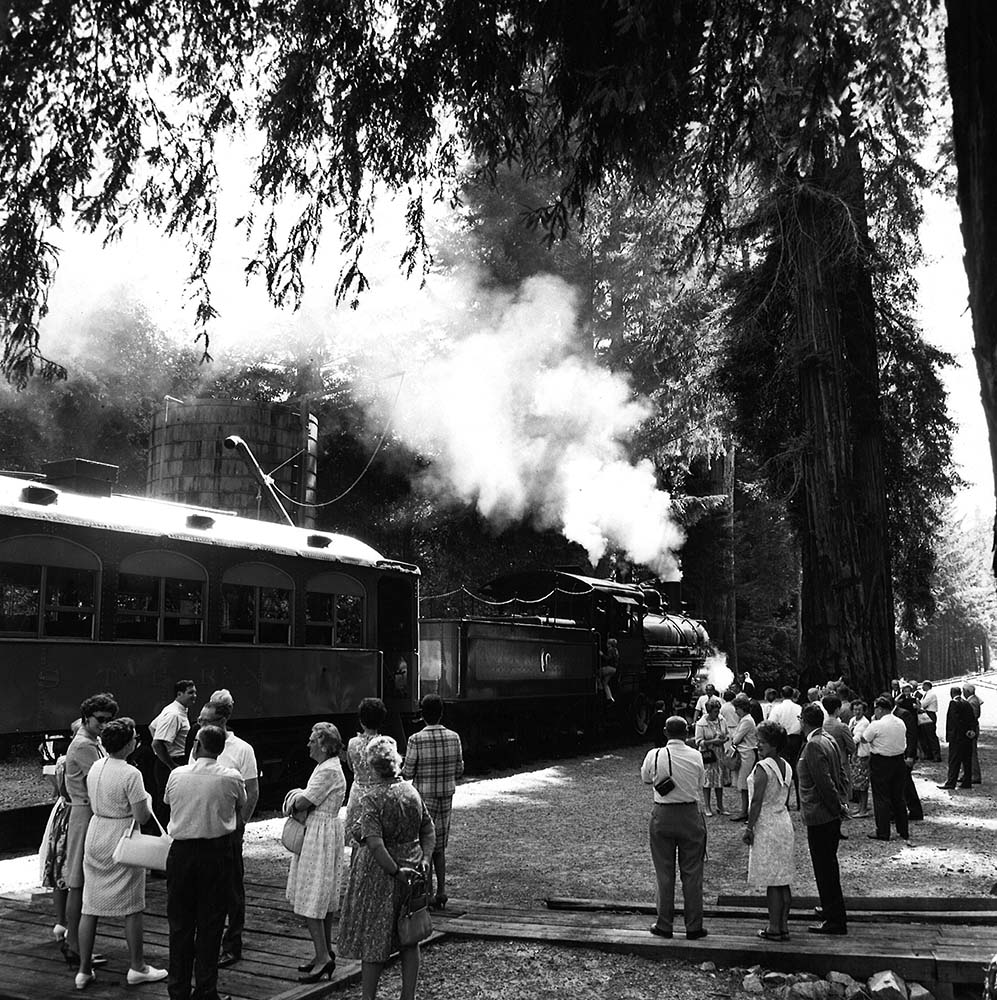
National Geographic
National Geographic
The name "The Friendly Train Called Skunk" gained popularity after National Geographic featured an article on the Skunk Train in May 1959. Since then, the name stuck, and the train has been known as the Skunk Train.
National Geographic
Things You'll Notice
Things You'll Notice
As we continue our journey, you'll notice the abundance of redwood trees. Redwoods grow a few miles inland on a narrow strip of Northern California, about 30 to 40 miles wide.
Things You'll Notice
The Birds, The Bees, & The Trees
The Birds, The Bees, & The Trees
Redwoods often grow in groups or bunches, with new trees sprouting from old stumps after logging. They rely heavily on sprouting for reproduction, and their unique carpet-like root system assists in this process.
The Birds, The Bees, & The Trees
Tall Stumps
Tall Stumps
The old stumps left behind after logging are quite tall, as loggers used to cut the trees high up to avoid issues with water weight during transportation.
Tall Stumps
Spring Boards
Spring Boards
Loggers used spring boards to stand on while chopping down the trees. These boards were notched into the tree to provide a platform for cutting.
Spring Boards
3 Family Members
3 Family Members
The redwood tree family consists of three members:
1. California Coastal Redwood (Sequoia sempervirens): The tallest living thing on Earth, some reaching up to 380 feet tall.
2. Giant Sequoia (Sequoiadendron giganteum): Not as tall but much older and wider, with the largest tree by volume on Earth.
3. Dawn Redwood (Metasequoia): A smaller member that grows in China, known for its deciduous nature.
1. California Coastal Redwood (Sequoia sempervirens): The tallest living thing on Earth, some reaching up to 380 feet tall.
2. Giant Sequoia (Sequoiadendron giganteum): Not as tall but much older and wider, with the largest tree by volume on Earth.
3. Dawn Redwood (Metasequoia): A smaller member that grows in China, known for its deciduous nature.
3 Family Members
Botanical Gardens
Botanical Gardens
You can see both the California Coastal Redwood and the Dawn Redwood at the Botanical Gardens in Fort Bragg. Consider purchasing tickets through the Skunk Train for a lower price.
Botanical Gardens
Redwood Bark
Redwood Bark
The redwood tree's soft, fibrous, and red-colored bark sets it apart from other trees.
Redwood Bark
Fire Retardant
Fire Retardant
The thick bark of a fully grown redwood is fire retardant, providing protection to the flammable interior wood.
Fire Retardant
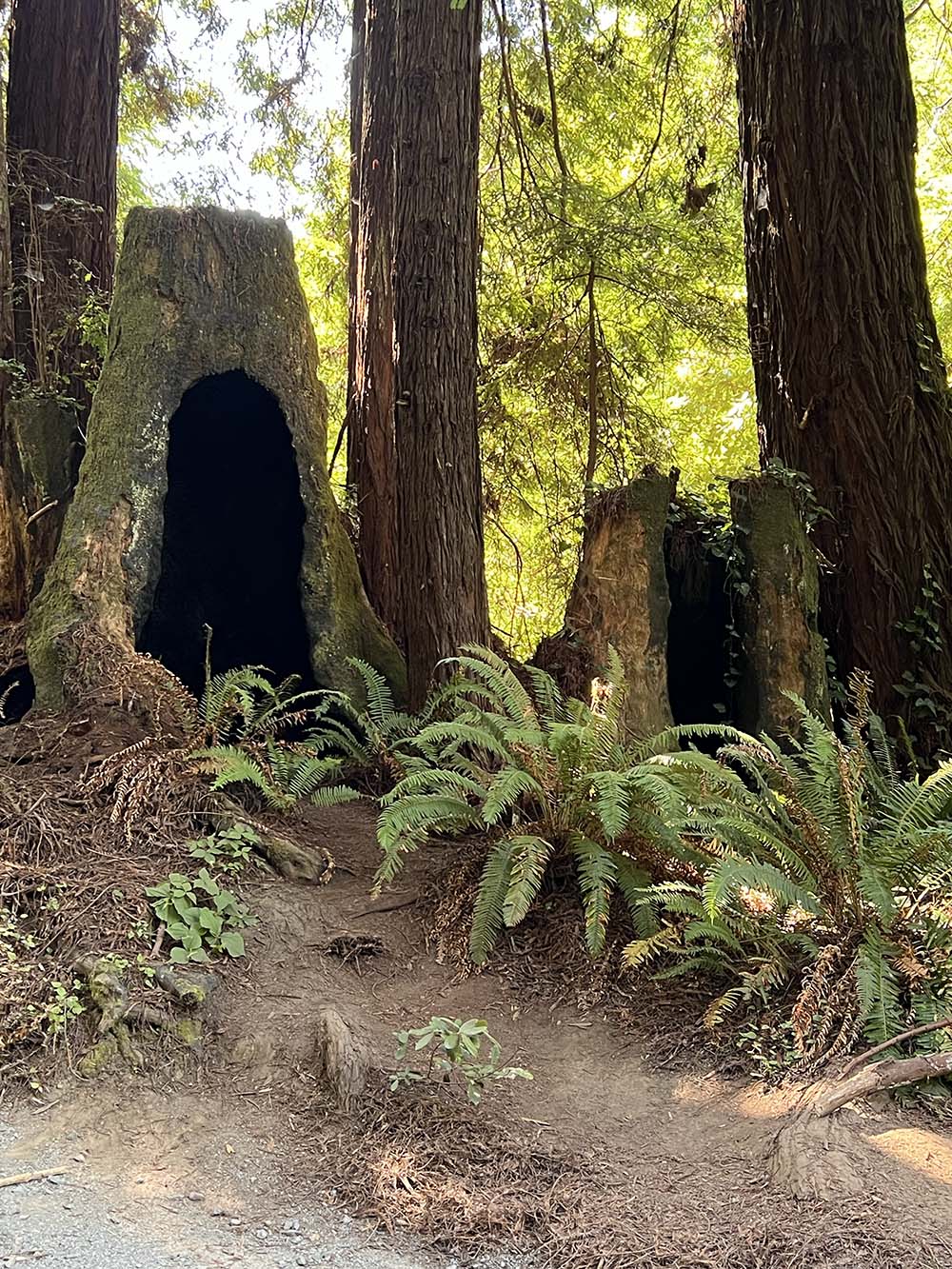
Goosepens
Goosepens
In charred-out caves called Goosepens, settlers used to keep livestock such as geese. These formations are common in redwood forests.
Goosepens
Fort Bragg History
Fort Bragg History
Learn about the city's history, starting as a military post in 1857. Fort Bragg was later incorporated in 1889, and the Union Lumber Co. played a significant role in its development.
Fort Bragg History
Our Tracks/Facts
Our Tracks/Facts
Learn about the Skunk Train's tracks, bridges, and curves that make it the "crookedest railroad in the west."
While on the train passengers see some standing water, they also see some very large leafed plants sprouting out of the water. Believe it or not, these plants are known as “Skunk Cabbage”. While they do not normally smell, if disturbed; just like a skunk, they can produce a pungent odor. These plants love wet, moist areas, as do Redwoods and many other flora in the area. This forest is technically a temperate rainforest, with rainfall reaching around 70 inches some years.
While on the train passengers see some standing water, they also see some very large leafed plants sprouting out of the water. Believe it or not, these plants are known as “Skunk Cabbage”. While they do not normally smell, if disturbed; just like a skunk, they can produce a pungent odor. These plants love wet, moist areas, as do Redwoods and many other flora in the area. This forest is technically a temperate rainforest, with rainfall reaching around 70 inches some years.
Our Tracks/Facts
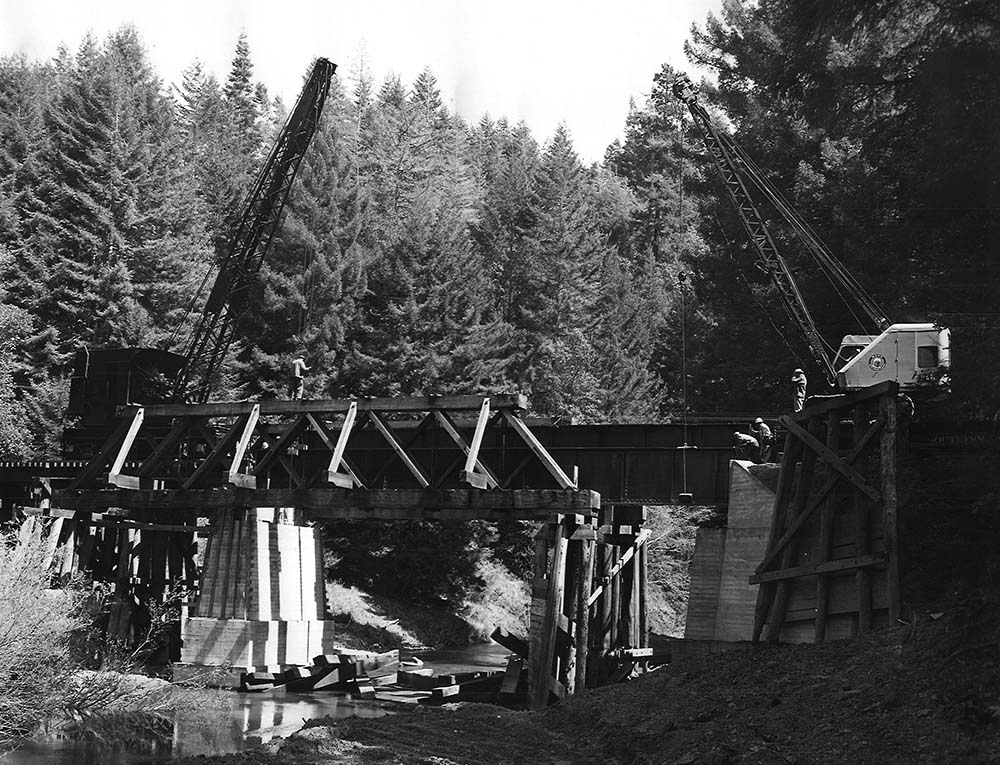
Bridges & Trestles
Bridges & Trestles
When construction of our railroad was completed in 1911 we had 115 bridges & trestles over our 40-mile route between Fort Bragg & Willits. Over the years as many logging camps, towns, & mills started to disappear we would remove many side tracks than ran up the canyons & creeks along our line. This eliminated the need to pass over the water so frequently, because of this we now have 32 bridges and trestles.
Bridges & Trestles
Curves
Curves
We have a lot of curves. In fact, between Fort Bragg & Willits we have 381 curves. That is 381 curves in only 40 miles of track! Our longest section of straight track is a little less than 1 mile in length. If you were to have ridden out of Willits, you would have crossed a section of track that takes you 8 ½ miles of winding around sharp curves on a steep mountain pass, to go only a straight-line distance of 1 ½ miles!
On a couple of these curves, if you were headed West towards Fort Bragg, it would curve you 180 degrees around the side of the mountain until you end up facing the opposite direction you were trying to go!
The Skunk Train is now known to be the “crookedest railroad in the west” and possibly even the entire world now. Many other railroads claimed to be the crookedest, but they no longer exist, therefore it is very likely that the Skunk Train is in fact the crookedest railroad in the world!
On a couple of these curves, if you were headed West towards Fort Bragg, it would curve you 180 degrees around the side of the mountain until you end up facing the opposite direction you were trying to go!
The Skunk Train is now known to be the “crookedest railroad in the west” and possibly even the entire world now. Many other railroads claimed to be the crookedest, but they no longer exist, therefore it is very likely that the Skunk Train is in fact the crookedest railroad in the world!
Curves
Glen Blair Junction
Glen Blair Junction
The Pudding Creek Express disembarkment is at The Glen, 3.5 miles in from the coast. This was the junction point that spurred off to the town of Glen Blair – also known as Glenela. The Glen Blair Lumber Company founded this site, producing some of the finest redwood timber in the world, until the Union Lumber Company acquired it in 1891. Until Tunnel #1 was completed, Glen Blair was the end of the line – and flourished until the 1920s, when it was abandoned and eventually overgrown by redwoods.
Glen Blair Junction
Equipment
Equipment
Some of you may be interested to know more about the equipment we are using today.
Equipment
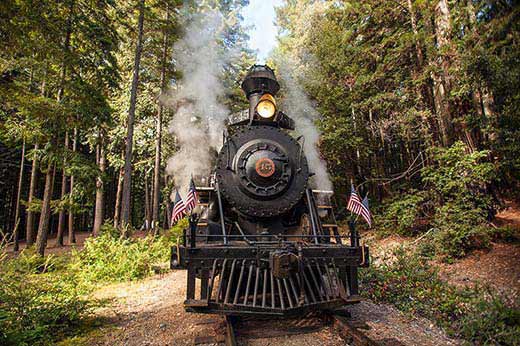
Steam Locomotive #45
Steam Locomotive #45
Was built in 1924 by the Baldwin Locomotive Works for the Brown-Lee Lumber Company in Medford, Oregon. #45 came to work at the Skunk Train in 1964 & has been in operation with us ever since.
Steam locomotives are classified by their wheel arrangements in numbers of wheels, in this case 2-8-2. #45 has 2 pilot wheels, 8 driving wheels, then 2 more trailing wheels under the cab, therefore, the classification of 2-8-2.
2-8-2 is often referred to as “Mikado”. In 1897 the Baldwin Locomotive Works were commissioned to build many 2-8-2 locomotives for a Japanese Railway. In 19th Century Japan, the Emperor was often referred to as “Mikado” which is an old-fashioned name for “Emperor of Japan”. #45 was always designed to burn oil for fuel. Originally designed to burn “bunker c” oil, which is a thick slurry of oil that had to be pre-heated to thin it enough to be fired. Today, #45 burns recycled motor oil. #45 operates with a boiler pressure of 170psi, weighs 118 tons, & has a tractive effort of 30,000-foot-pounds.
Steam locomotives are classified by their wheel arrangements in numbers of wheels, in this case 2-8-2. #45 has 2 pilot wheels, 8 driving wheels, then 2 more trailing wheels under the cab, therefore, the classification of 2-8-2.
2-8-2 is often referred to as “Mikado”. In 1897 the Baldwin Locomotive Works were commissioned to build many 2-8-2 locomotives for a Japanese Railway. In 19th Century Japan, the Emperor was often referred to as “Mikado” which is an old-fashioned name for “Emperor of Japan”. #45 was always designed to burn oil for fuel. Originally designed to burn “bunker c” oil, which is a thick slurry of oil that had to be pre-heated to thin it enough to be fired. Today, #45 burns recycled motor oil. #45 operates with a boiler pressure of 170psi, weighs 118 tons, & has a tractive effort of 30,000-foot-pounds.
Steam Locomotive #45
Coaches 690 Series
Coaches 690 Series
The coaches located on the train were built 1919 for the Erie Lackawanna line that operated mostly in the Northeasten states of the U.S.
Coaches 690 Series
101101 Flatcar
101101 Flatcar
We also have our open-air Observation car. This car is an old freight flatcar that was built in 1947 for the US Marine Corps to haul Sherman tanks shortly after WWII. Sherman tanks weigh about 40 tons each but are relatively short in length and width, so they could fit more than 1 tank on this car.
101101 Flatcar
Coaches 650 Series
Coaches 650 Series
The coach of the train (with the round style roof(s)) was/were built for Southern Pacific Lines in the late 1920s.
Coaches 650 Series
